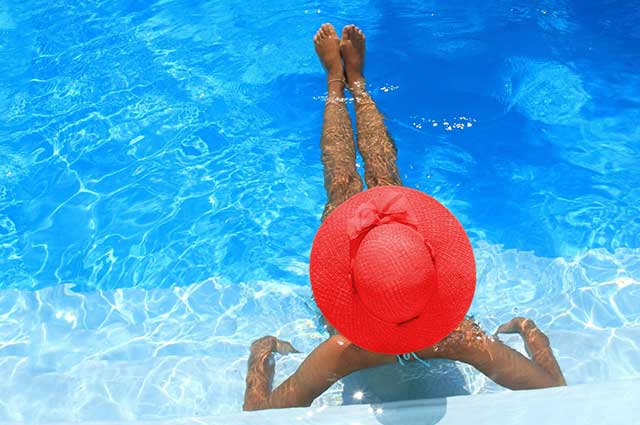Your pool may be out of use during the winter months, but perhaps you’re already dreaming of summer and all the fun that you’ll have outdoors. However, even if the weather cooperates this summer, you still won’t be able to enjoy your pool if algae takes over it.
To protect your pool and get the most use out of it, you need to know more about algae. Learn what it is, how algae blooms happen, and what you can do about them.
What Is Algae?
Though its definition is broad, algae found in pools is predominately plant or plantlike. Sharing similarities with land plants, it feeds on nutrients from its environment and uses photosynthesis to convert sunlight into energy.
Pool algae is generalized by color:
Green. This type of algae is the most common. Green algae collect on the floors and walls, sticking wherever the suction is poor and floating in the pool water. It is the weakest form of algae, having little resistance to chlorine and high susceptibility to algaecides. Although it is the weakest, algae blooms are typically green because of its commonality, rapid rate of growth, and widespread nature. Mustard. Rather than floating freely as green algae can do, this yellow color algae collect almost exclusively on the walls and floors of a pool. It is not as common nor as easily dealt with as green algae. Mustard algae possess resilience to standard levels of pool chlorination, often necessitating the use of algaecides for complete removal. Black. The least common and strongest of all previously mentioned algae types. It is extremely resistant to chlorine. Once black algae have taken root, it involves physical and direct chlorine application for removal. Specialty stainless steel brushes and scrapers, chlorines, and algaecides are usually used for this application.
Individual algae are microscopic. By the time you can see algae, millions of algae organisms are in your pool.
Algae thrive in many places. Because algae are so common, algae spores find refuge in your pool all the time: they may be deposited by the wind or rain. Algae spores may cling to your swimsuit and toys you use in oceans, lakes, rivers, or other pools. Rinsing your swimsuit and equipment can prevent additional spores entering your pool from outside sources.
What Can You Do About Algae?
Since algae are invisible to the naked eye until millions are present, the best thing you can do is prevent algae from growing in the first place. Make sure the pump and filter are operating properly. The difference between a pool that is properly filtering and one that is not is the same difference between a lake and a river. Running water is the first step and deterrent to algae formation.
The next step is maintaining a clean, well filtered, and chemically treated pool. During the summer months, remove as much of the debris as possible. Debris expends precious sanitizer and algaecide on matter that can otherwise be physically removed. Lowering the sanitizer and algaecide level create a situation where algae can bloom more easily. Similarly, the filter removes algae spores and dead algae from your pool as the water passes through it. Chemically treating your pool to prevent algae involves maintaining a sanitizer level. Though algaecides are not required to prevent algae, they are highly recommended as sanitizer and algaecide work in combination to prevent algae from taking hold in your pool.
Algaecides are chemicals that are specialized in the task of killing algae. As such, algaecides work more effectively against the resilient mustard and black algae types. As these types, especially black algae, can be tedious to deal with. Using an algaecide in combination with your sanitizer is one of the best preventatives for them.
However, once you do have an algae bloom, you have to take action to get rid of it. Shock the pool with a large dose of sanitizer and non-foaming algaecide. Follow up shocking by using a flocculent to aid in filtering the algae out or sinking it to the pool floor for vacuuming. One shocking might not be enough, you will want to test the water and shock again as needed.
After shocking and dealing with the algae bloom, check your pool more often than before. Clarity may be restored but the chlorine and algaecide demand of your pool may be high.
Though you may be able to successfully kill algae blooms on your own, you’ll get better results if you rely on a professional. KrisCo Aquatech Pools & Spas offers professional pool maintenance to prevent and treat algae blooms. Call us to set an appointment with our team.


Recent Comments